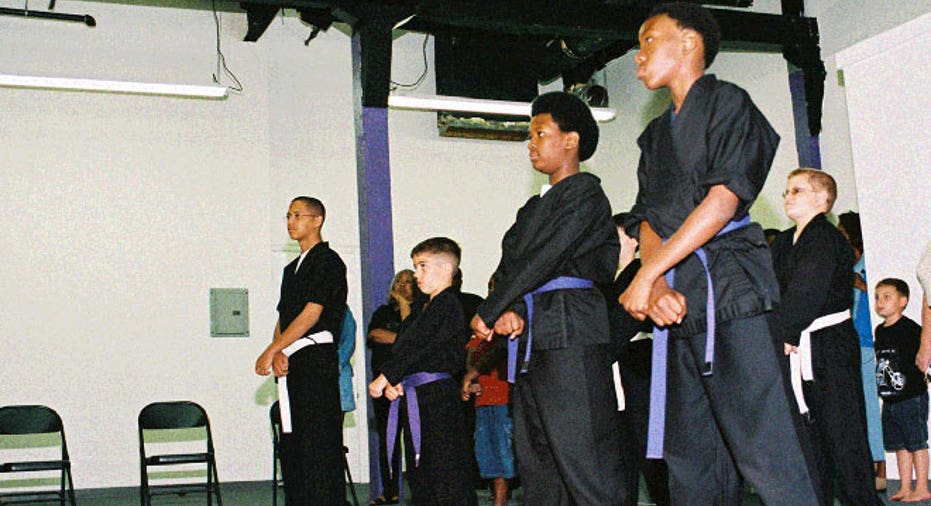Katrina Business Survivors Look Back, Offer Advice to Sandy Victims

Business owner Jason Horne says faith and resilience are in his DNA, and he admits that taking on risk is an inevitable part of being a small-business owner, especially when starting out. However, Horne lost his business, New-Orleans-based XS Martial Arts Dojo not once, but twice, to natural disaster-- enough to make many give up entirely. "It's a devastation, it’s a tragedy," Horne said. "We don't get in car accidents on purpose, and sometimes they take limbs. Sometimes they paralyze. But are you going to stop living? Well, your business is your living. So you need to push forward." And push forward he did. Horne opened in 2002, four years before Katrina ravaged New Orleans, and says he had built up a solid clientele before the storm. After the monster storm he found his company under water with wind and rain damage, and emptied by looters. Horne says he turned to the Small Business Authority and secured a disaster recovery loan after the storm. In January 2006, he borrowed $50,000 at an 11% interest rate over seven years, and within a month he was able to reopen his doors. Through grassroots marketing, customers slowly began to trickle in. When Hurricane Gustav hit in 2008, Horne said he was more prepared. However, his roof caved in, and his equipment was once again damaged. This time he had savings in place to rebuild again, without the help of a government loan. "We grew even stronger after the hurricane," he said. "Hurricane Sandy shut down everything, just like Katrina did, so all that you have is word of mouth. When everyone is in the same boat, we can't be crying for each other. The playing field is level; it’s where you go from that point." While the Federal Emergency Management Agency works with individuals in post- disaster situations, Carol Chastang, public liaison for the U.S. Small Business Administration, said the SBA works alongside FEMA, providing more long-term assistance than actually immediate help. However, small –business owners should still register with FEMA in order to be sure they are connected to other potential resources from federal and state agencies.
In the aftermath of Sandy, the SBA opened business recovery centers in New Jersey, New York and Connecticut. Small-businesses impacted by the storm have two options from the SBA—one is a disaster recovery loan for damages to property for anything that is not fully covered by insurance. Loans are available for up to $2 million, with up to 4% interest rates (3% for nonprofits) over 30-year terms. The second option is for economic injury, again up to $2 million at 4% for businesses and 3% for nonprofits, for up to 30 years. Certain terms apply, for example, if a business incurred flood damage and is applying for a disaster recovery loan, the owner must seek federal flood insurance.
Chastang said that businesses and nonprofits can also borrow a combination of the two loans for up to $2 million if they incur both physical and economic damages. The SBA can also increase the loan amount up to 20% of the total damage to a business’ real estate, so long as that $2 million cap is not reached.
While businesses may not be as eager to take on more debt, the interest rates are considerably lower than standard market rates, she said.
“We make sure every business owner can comfortably take the loan and pay it back,” she said. “We are here to help the businesses rebuild and recover to get to where they were before this happened. We are an aggressive lender, but know that these are taxpayer funds as well. We want to protect both the business owner and taxpayer.”
Since Sandy, for the Tri-State area, the SBA has received 277,711 disaster loan applications, 57,000 of which were for businesses. As of November 25, 41 had been approved for a total of $3,014,900. From application submission to decision time from the SBA is typically 10 days, and disbursement usually takes five days more, Chastang said.
Like Horne, Lee Vorisek, owner of Altamax, was also just getting business started in New Orleans prior to Hurricane Katrina. Today, he is celebrating the 10th anniversary of his light manufacturing business, however, when his building filled with eight-feet of water and he was without flood insurance, building space or any equipment, Vorisek wasn't sure if he would ever open his doors again. Within four days of the storm hitting, Vorisek said he had to decide whether he would let his business go under, or attempt to rebuild. Because he had salvaged his company contacts, orders, payables and receivables, he let clients know his decision and immediately began to look for a place to manufacture. "The time frame is what you have to keep in mind here, because while your customers might be sympathetic, they aren't going to go out of business just because your business is down," he said. While Vorisek considered an SBA loan, he said the amount of time it would have taken waiting for it would have put him out of business. Local banks were also shut down, and insurance money took months to come through. The business was lucky to not be in the red at the time of the storm, and had a $200,000 line of credit it put to use. He also received nearly $2 million via Fair Market funding after the disaster, at a locked-in interest rate of 5.9% for the first five years, on a 23-year payback term. Of the $400,000 in damages he incurred, Vorisek said he received about $90,000 back from insurance. "You have to have dedication once you make up your mind that you will rebuild-- there is no turning back," Vorisek said. "You need to have relationships, it’s like anything else in life, people will stick with you."



















